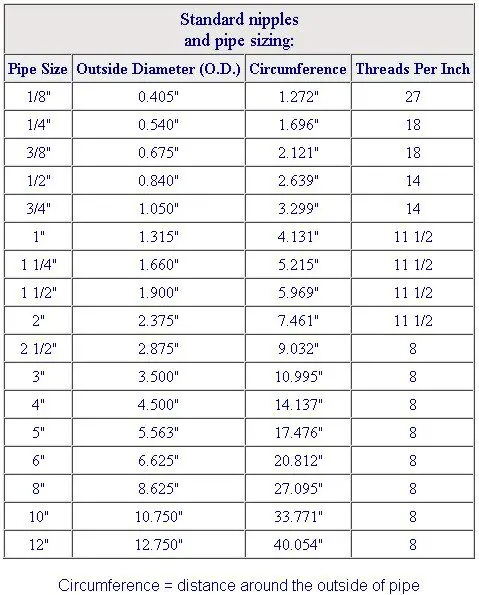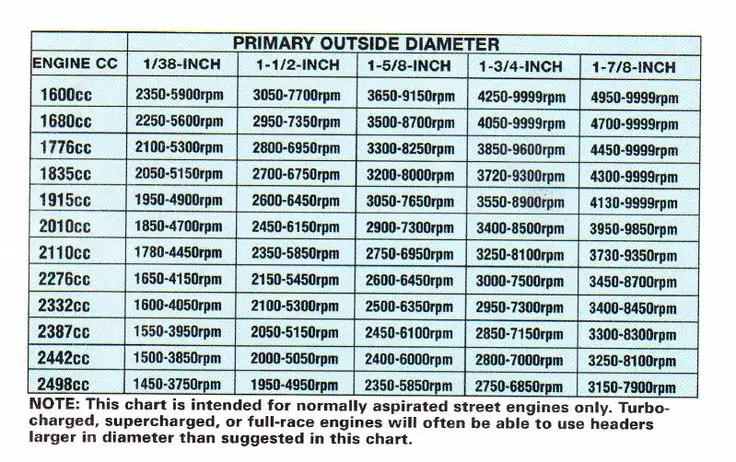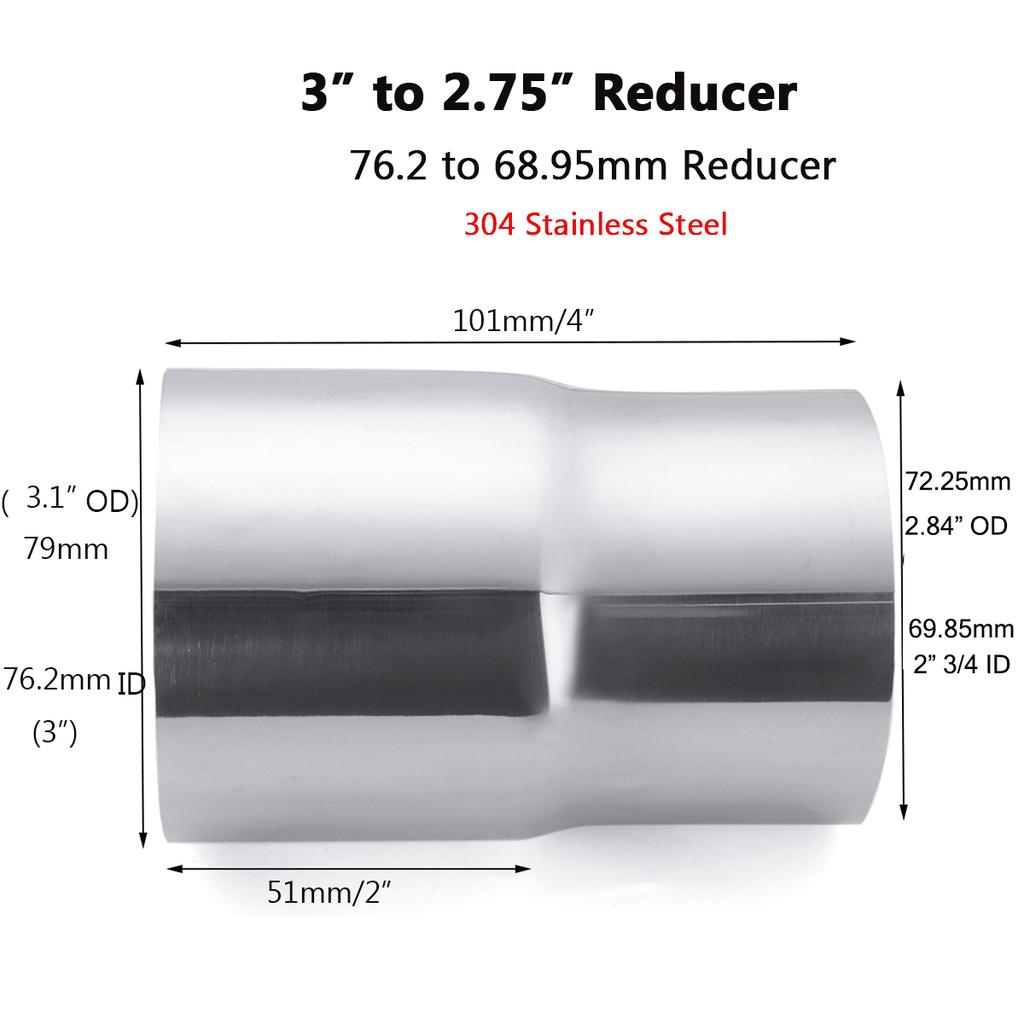Exhaust pipe adapters size chart helps you choose the right adapter by matching pipe diameters. It ensures a proper fit for efficient exhaust flow and system performance.
When working on an exhaust system, selecting the right exhaust pipe adapter is crucial for ensuring a seamless fit between different sections of your vehicle’s exhaust system. An exhaust pipe adapters size chart serves as a helpful tool to identify the correct size, ensuring that the adapter fits properly and functions efficiently.
In this detailed guide, we will dive into the importance of exhaust pipe adapters, explain how to read a size chart, explore the different types of adapters, and provide valuable tips for selecting the right adapter for your vehicle.

Contents
What Are Exhaust Pipe Adapters?
Exhaust pipe adapters are components used in automotive exhaust systems to connect different sections of the exhaust system, especially when those sections have differing diameters or require a change in material type. These adapters are often used when modifying a vehicle’s exhaust, replacing old parts, or customizing the exhaust system for better performance.
Exhaust systems typically include pipes, mufflers, catalytic converters, and other components that need to be connected securely. The adapters ensure that these components work seamlessly together, preventing leaks, reducing noise, and improving exhaust flow efficiency.
Types of Exhaust Pipe Adapters
There are three primary types of exhaust pipe adapters:
- Reducers: These adapters reduce the diameter of the exhaust pipe to allow a smaller pipe to connect to a larger pipe. They help manage the exhaust flow and are often used when upgrading or modifying an exhaust system.
- Expanders: These adapters increase the diameter of the exhaust pipe. Expanders are typically used when a smaller exhaust pipe needs to connect to a larger one. This can help increase airflow in performance applications.
- Connectors: These are used to connect two pipes of the same size, ensuring a tight, secure, and leak-free connection.
Each type of adapter is essential for different purposes, and the right choice depends on your vehicle’s exhaust configuration and performance requirements.
Why is an Exhaust Pipe Adapters Size Chart Important?
An exhaust pipe adapters size chart is a valuable tool that provides specific measurements, materials, and part numbers for exhaust pipe adapters. When you’re installing or modifying your exhaust system, it’s vital to know which sizes and types of adapters are compatible with your vehicle’s pipes. Here’s why having access to a size chart is crucial:
1. Correct Fitment
The most important function of an exhaust pipe adapter is ensuring the correct fitment between exhaust components. A size chart helps you match the inner and outer diameters of the pipes with the corresponding adapter size. An incorrect fit could lead to leaks, inefficiencies, and potential damage to the exhaust system.
2. Optimal Performance
Choosing the right size adapter guarantees proper exhaust flow. When exhaust gases flow smoothly through the pipes, it leads to better engine performance, improved fuel efficiency, and reduced engine strain. Using the wrong adapter could impede the exhaust flow and impact the vehicle’s overall performance.
3. Durability and Longevity
Exhaust pipe adapters are typically made from materials such as stainless steel or aluminized steel. These materials ensure that the adapter can withstand high temperatures and corrosion. An accurate size chart will also indicate the material type of the adapter, helping you select one that is durable and suited for your needs.
4. Avoiding Damage
Selecting the wrong size adapter can cause damage to your vehicle’s exhaust system over time. If the adapter is too tight or too loose, it could create leaks, cause excessive vibrations, or even damage other exhaust components.

How to Read an Exhaust Pipe Adapters Size Chart
Exhaust pipe adapters come in various sizes and materials, and it’s essential to understand how to interpret the information on the size chart. The following sections will guide you through the key elements of a size chart.
Step 1: Understand the Dimensions
The inner diameter (ID) and outer diameter (OD) are the most important measurements to consider. The ID refers to the internal width of the pipe, while the OD refers to the external width. Depending on the type of adapter (reducer, expander, or connector), you’ll need to choose an adapter that fits the inner diameter of one pipe and the outer diameter of the other.
Example:
- 2.5″ to 3″: This means the adapter can connect a 2.5-inch ID pipe to a 3-inch OD pipe. It’s common in performance modifications to improve exhaust flow.
- 2″ to 2.5″: This adapter is typically used in smaller vehicles and compact cars where the pipe size is not as large as in heavy-duty trucks or performance vehicles.
Step 2: Determine the Length
The length of the adapter is another important factor to consider. Depending on the space available in the exhaust system, the adapter length can vary. Most adapters are around 4 to 6 inches long, but you may need a shorter or longer one based on your installation needs.
Step 3: Material Type
Exhaust pipe adapters come in a variety of materials that determine their durability and resistance to heat. Common materials include:
- Stainless Steel: Highly resistant to rust and corrosion, perfect for performance vehicles exposed to high temperatures.
- Aluminized Steel: A more affordable material with good heat resistance but less durability than stainless steel.
- Mild Steel: Used in more budget-friendly applications, though it can corrode more easily than stainless or aluminized steel.
Be sure to select an adapter with a material that matches your vehicle’s needs.

Common Exhaust Pipe Adapter Sizes
When looking at an exhaust pipe adapters size chart, there are several common sizes to consider, each suited for different types of vehicles and exhaust systems. Below are a few examples:
- 2.5″ to 3″: Used in performance cars and vehicles where increased exhaust flow is necessary.
- 3″ to 2.5″: Common for standard vehicles where a reduction in pipe size is required.
- 2″ to 2.5″: Often used for smaller vehicles such as compact cars and motorcycles.
- 3.5″ to 4″: Frequently found in heavy-duty trucks, diesel engines, and larger vehicles requiring more exhaust flow.
- 4″ to 4.5″: Used in commercial trucks or high-performance setups.
It’s always important to measure the exhaust pipe sizes in your vehicle before selecting an adapter to ensure proper fitment.
Frequently Asked Questions
Here are some FAQs about exhaust pipe adapters –
1. Do I Need an Exhaust Pipe Adapter?
If your vehicle has pipes of different diameters, an exhaust pipe adapter is necessary to ensure a tight and secure fit. Adapters help maintain exhaust flow efficiency and prevent leaks.
2. How Do I Measure the Size of My Exhaust Pipe?
To measure your exhaust pipe, use a caliper or measuring tape to find the inner and outer diameters of the pipe. The inner diameter refers to the internal width, and the outer diameter refers to the external width.
3. Can I Use an Exhaust Pipe Adapter for Any Vehicle?
While most adapters are designed to fit common sizes, it’s important to check the dimensions and materials for compatibility with your vehicle’s exhaust system. Always refer to the vehicle’s manual or consult with a professional before purchasing.
4. How Can I Find the Right Adapter for My Vehicle?
The best way to find the correct adapter is to consult an exhaust pipe adapters size chart. Measure the inner and outer diameters of the pipes you wish to connect and choose an adapter that matches those sizes.
5. Can I Install an Exhaust Adapter Myself?
If you have the necessary tools and experience with exhaust systems, you can install an exhaust adapter yourself. However, if you’re unsure, it’s best to consult with a professional mechanic to ensure proper installation.
Conclusion
An exhaust pipe adapters size chart is an essential resource for selecting the right adapter to connect different sections of your vehicle’s exhaust system. By understanding the various types of adapters, how to read a size chart, and choosing the correct dimensions and materials, you can ensure a proper fit, optimal performance, and longevity for your exhaust system. Always measure carefully and consult with professionals if needed, as selecting the wrong adapter can lead to exhaust leaks and reduced engine efficiency.
Selecting the right exhaust pipe adapter will not only enhance the vehicle’s performance but also ensure that your exhaust system operates smoothly and efficiently for years to come.